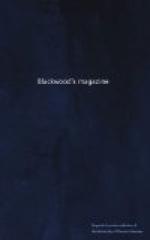There can, therefore, it is clear, be no universal rule for the use of the two valuable instruments in question, as each has its own defined sphere of action. This, we think, is the common-sense view of the case. But if any one insists upon having a universal rule which shall save him from thinking or observing for himself in all cases, then we should say—in all cases subsoil, because it is the safer.
With this subject the first volume of The Book of the Farm is brought to a close; but winter still continues, and in other winter-work of scarcely less importance the young farmer has still to be instructed. We have hitherto said nothing of the more expensive and beautiful embellishments of the book, because the most interesting of them are portraits of celebrated short-horns, working horses, sheep, and pigs—a subject of which the author begins to treat only at the commencement of the second volume. The feeding of stock is one of those parts of the winter’s labours, in improving husbandry, upon which not only the immediate profit of the farmer, but the ultimate fertility of his land, in a great measure depends. The choice of his stock, and the best mode of treating and tending them, therefore, are subjects of the greatest consequence to the young farmer. In the choice of his stock he will be aided at once by the clear descriptions, and by the portraits so beautifully executed by Landseer and Sheriff, by which the letterpress is accompanied. In the subsequent treatment of them, and in the mode by which they may be most profitably, most quickly, or most economically fed in the winter season, he will be fully instructed in the succeeding chapters of the book.
Turnips and other roots are the principal food of cattle in the winter: a preliminary chapter, therefore, is devoted to the “drawing and storing of turnips and other roots.” Had we our article to begin again, we could devote several pages, agreeably to ourselves, and not without interest, we believe, or without instruction, to our reader, in discussing a few of those points connected with the feeding of cattle, upon which, though the means of information are within their reach, practical men have hitherto permitted themselves to remain wholly ignorant. Of these points Mr. Stephens adverts to several, and suggests the advantage of additional experiments; but the whole subject requires revision, and, under the guidance of persons able to direct, who are acquainted with all that is yet known, or has as yet been done either in our own or in foreign countries, experiments will hereafter, no doubt, be made, by which many new truths, both theoretically and practically valuable, are sure to be elucidated.




